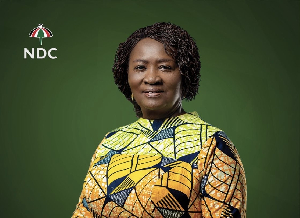Ghana’s inflation rate will end the year 2023 at 38.1 per cent, the Economist Intelligence Unit (EIU) has predicted.
The London-based firm said in its latest report that upward domestic price pressures will be spurred in part by pass-through effects of sustained depreciation and the introduction of new taxes, including a rise in the Value Added Tax (VAT) rate and excise duties.
“We expect inflation to rise further on average in 2023, to 38.1%, despite a slowdown in monthly inflation over most of the period, with inflation having declined to a (still very high) annualised 45% in March, from 52.8% in February [2023]”.
The EIU, however, expects inflation to average 10.9% a year between 2024 and 2027, falling into the lower half of the Bank of Ghana’s target range of 6-10% in 2027.
This will reflect waning supply-side price pressures as global commodity prices decline.
The Ghana Statistical Service reported a few weeks that the year-on-year inflation rate for March 2023 was 45.0%.
This was announced at a press conference in Accra on Wednesday, 12 April 2023.
This means that in the month of March 2023, the general price level was 45.0% higher than in March 2022.
Month-on-month inflation between February 2023 and March 2023 was -1.2%
The Consumer Price Inflation for March 2023 was 166.6 relative to 114.9 for March 2022 using the linked series.
Definition and measurement of CPI and rate of inflation:
▪CPI measures changes in the price of a fixed basket of goods and services purchased by households
▪The assumption is that the basket is purchased each month, hence captures price changes each month
▪The rate of inflation is the relative change in CPI between periods ▪Inflation is reported year-on-year (annual inflation) and month-on-month (monthly inflation), and granulated to determine regional and commodity type and source of inflation
▪CPI does not measure price levels
▪The measures of CPI and inflation are based on the Consumer Price Index Manual: Concepts and Methods ▪Data (market readings) are captured monthly
▪Key variables are prices, quantities and expenditure weights of items ▪Price reference year for the new series is 2021 (2021 = 100)
▪Prices are collected for 47,877 products every month from 16 regions.
▪Price collection is done in 57 markets ▪Prices are collected from about 8,337 outlets.
▪Products are ordered in a hierarchy of 13 Divisions, 44 Groups, 98 Classes, 156 Subclasses and 307 Items.
▪Every Item can only be part of one Subclass, and every Subclass can only be part of one Class, etc.
Disaggregation of March 2023 rate of inflation:
▪Food inflation (0.437) was 50.8%
▪Last month’s Food inflation was 59.1%
▪Month-on-month Food inflation was -0.9%.
▪Non-food Inflation- (0.563) was 40.6%
▪Last month’s Non-Food inflation was 47.9 %
▪Month-on-month Non-Food inflation was -1.5%
▪Inflation for locally produced items was 41.9%
▪Inflation for imported items was 51.6%
- Ghana's economy on the path of stability – Amin Adam
- The Bediako family that has dominated Ghana's pharmaceutical industry for decades
- Grace Nkansa Asante: Ghana's first female Professor of Economics
- Cashew processing gets major boost from CSIR
- Ghana's economic resilient programme attracts positive outlook from key partners - Dr. Amin Adam
- Read all related articles













